Learn to Surf in Sydney: A Complete Guide
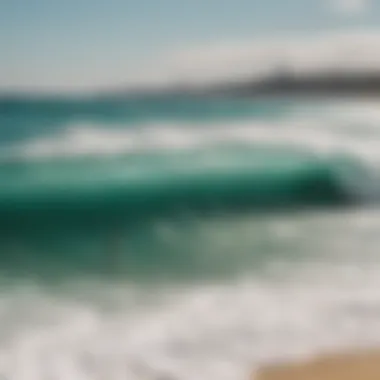
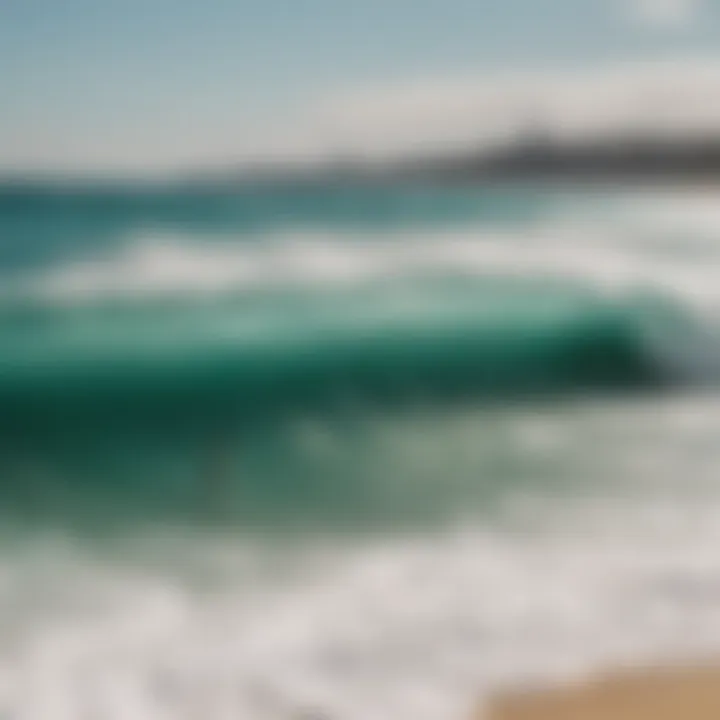
Intro
Surfing in Sydney is no walk in the park; it’s an adventure drenched in sun, salt, and adrenaline. With its stunning coastline and vibrant surf culture, Sydney stands as a prime location for beginners and seasoned surfers alike. If the thought of gliding over waves feels exhilarating to you, you’re in the right place. This guide will serve as your compass, helping you navigate everything from choosing the right equipment to understanding the nuances of local surf etiquette.
As you embark on this journey, you’ll find that each surf spot offers its unique rhythm, allowing for diverse learning experiences. More than just a physical activity, surfing is also about connection—whether it’s with the ocean, your surfboard, or the vibrant community that thrives on its shores. By the time you’re done reading this, you’ll be well-equipped to not just surf, but to truly embrace the sport.
Gear Recommendations
Essential Gear for Beginners
Every grand journey begins with the right tools in your bag, and surfing is no exception. For newcomers, understanding the essentials can make the difference between a pleasant day at the beach and a regrettable experience. Here are some must-haves:
- Surfboard: Opt for a soft-top longboard. The extra stability makes it easier to catch waves. Brands like Wavestorm or Bic offer beginner-friendly options.
- Wetsuit: Don’t let chilly waters put a damper on your enthusiasm. A spring wetsuit or a shorty will keep you warm in cooler seasons. Brands like O’Neill or Rip Curl have solid choices.
- Leash: This essential piece keeps your board tethered to you, preventing it from becoming a runaway hazard.
- Surf Wax: It improves traction between your feet and your board, boosting your balance as you ride the waves.
Advanced Equipment for Professionals
Once you’ve mastered the basics, you might want to gear up with more specialized equipment. Here’s what you should consider:
- Performance Shortboards: Brands like Channel Islands or Lost cater to those looking for speed and agility in the water.
- High-Quality Wetsuits: For enhanced warmth and flexibility, check out products by Patagonia or Xcel.
- Fins: Experimenting with different fin types can significantly impact maneuverability and performance.
"Choosing the right gear is akin to finding a good pair of shoes—comfortable, supportive, and a perfect fit for your journey."
Techniques and Tips
Skill Improvement Strategies
Surfing techniques can be a world unto themselves. Here are a few strategies to kick your skills up a notch:
- Practice Popping Up: The transition from lying down to standing on your board can make or break your time in the water. Practice this on flat ground before hitting the waves.
- Ride the White Water: Starting in the white water (the foam left after a wave breaks) can build confidence and improve balance.
- Take Lessons: If you’re serious about learning, consider signing up for surf lessons with local instructors. It’s always beneficial to get feedback from seasoned surfers.
Safety Practices and Guidelines
The ocean can be unpredictable, and safety must be your top priority. Here’s what you should keep in mind:
- Know Your Limits: Don’t try to ride more advanced waves until you're ready. Pay respect to the ocean's power.
- Stay Aware of The Ocean: Always keep an eye on changing tides and weather conditions. Being informed can keep you out of harm's way.
- Practice Surf Etiquette: Respect fellow surfers. For instance, the surfer closest to the peak of the wave has the right of way.
By keeping these safety practices in mind, you can enjoy a fulfilling and responsible surfing experience.
Foreword to Surfing in Sydney
Sydney, with its shimmering coastline and vibrant culture, is synonymous with surfing. Not only is it home to picture-perfect waves, but it also embodies a lifestyle that transcends mere sport. For many, surfing isn’t just about riding the waves; it’s a way of life that fosters community, personal growth, and adventure.
In this guide, we’ll dive into every facet of surfing in this stunning city—from learning the ropes for beginners, to honing skills for seasoned surfers. Understanding the importance of surfing culture in Australia and looking at the spectacular beaches in Sydney sets the stage for exploring the ocean beyond. This article seeks to demystify the world of surfing, offering practical advice and insights that equip anyone, whether new or experienced, to navigate the surf with both confidence and respect.
The Significance of Surf Culture in Australia
Australia’s surf culture is deeply embedded within its national identity. From the iconic imagery of surfers gliding through crystal-clear waters to the cheers of crowds at renowned surf competitions, it's more than just recreation; it’s a cultural phenomenon. In Sydney, this culture thrives with surfers young and old gathering at popular surf spots, embodying a communal spirit that welcomes everyone.
Participating in this culture brings many benefits:
- Physical Fitness: Surfing demands strength, stamina, and balance. Hitting the waves is a full-body workout that improves coordination and flexibility.
- Mental Wellness: Immersion in nature has proven stress-relieving effects. The ocean's rhythmic ebb and flow can be meditative, easing tension and fostering mindfulness.
- Community: Surfing builds lasting friendships. Belonging to a surf community allows you to connect with like-minded individuals who share your love for the ocean.
As you learn to surf, you don't just gain a skill; you become part of a larger family with shared experiences and stories.
Overview of Sydney’s Beaches
Sydney’s coastline is dotted with diverse beaches, each providing unique conditions that cater to various skill levels. From the bustling atmosphere of Bondi Beach to the more secluded shores of Dee Why, there is something for everyone. Here’s a quick peek at some of the most notable spots:
- Bondi Beach: One of the most famous beaches in the world, Bondi attracts both tourists and locals. The beach offers steady waves and a vibrant atmosphere, making it a fantastic starting point for beginners.
- Manly Beach: Known for its surf-friendly conditions and breathtaking scenery, Manly is a hotspot for those looking to improve their skills. The beach offers a variety of breaks suited for every level.
- Cronulla: This beach boasts an array of waves that range from gentle to challenging. It’s ideal for surfers looking for a diverse experience without venturing too far from the city.
- Dee Why: For those who prefer less crowded conditions, Dee Why is a perfect alternative. Its consistent waves and picturesque surroundings provide the ideal backdrop for a day on the water.
"The sea does not reward those who are too anxious, too greedy, or too impatient. One should lie empty, open, choice-less as a beach—waiting for a gift from the sea." — Anne Morrow Lindbergh
In summary, learning to surf in Sydney opens a door not just to an exhilarating sport but also to a lifestyle enriched with community ties and health benefits. Whether you’re hitting the waves for the first time or looking to refine your technique, the engaging surf community and stunning beaches of Sydney await your discovery.
Understanding the Basics of Surfing
When stepping onto the sandy shores of Sydney, the appeal of riding the waves is hard to resist. Yet, for many, there remains an air of mystery surrounding the mechanics behind surfing. Grasping the basics is essential, whether one's ambition is merely to float atop the water or to carve elegant turns through powerful swells. This section serves as a foundation for new surfers, offering insights into key components that will enhance their experiences.
Choosing the Right Surfboard
Selecting a surfboard isn't just a matter of preference; it can significantly impact one’s learning curve. A suitable board provides stability and ease for novices. Generally, longer boards, known as longboards, offer more surface area, contributing to better balance and easier paddling. They’re ideal for beginners who are just getting acquainted with the ocean.
Consider also the material of the board. Epoxy boards are lightweight and sturdy which makes them favorable for those just starting. On the other hand, traditional polyurethane boards grant a more classic surfing feel but may not be as forgiving for those new to the sport. Factors like weight, height, and skill level also weigh heavily on choice:
- If you’re on the heavier side, opt for a longer board.
- Short boards can be great once you're comfortable but they require more skill to handle.
Getting advice from local surf shops around places like Bondi Beach might help, as they can provide board rentals, allowing you to try before you buy.
Essential Surfing Terminology
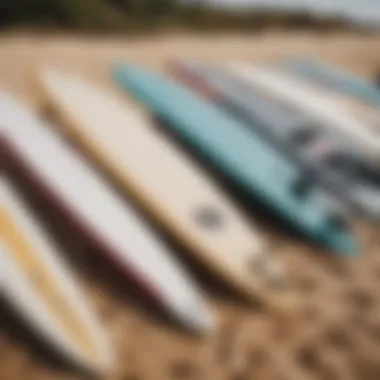
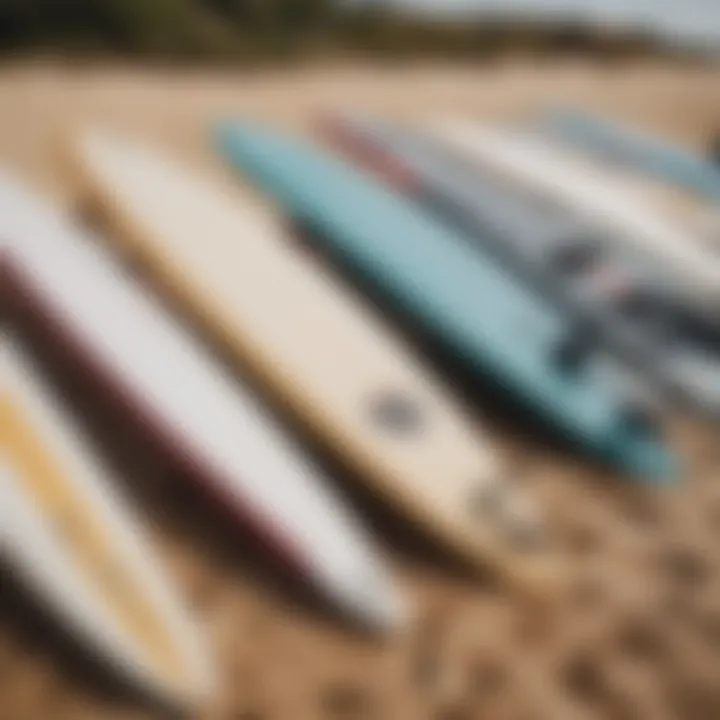
Before one can truly embrace surfing, understanding its unique language is crucial. Getting comfortable with specific terms can help in staying safe and in communicating with instructors and other surfers. Here are some basic terms to get you started:
- Dawn Patrol: This refers to surfing at dawn. It’s often quieter and scenic, a favorite for early risers.
- Green Wave: A wave that has not yet broken; it’s the ideal wave to ride.
- Take Off: This is the act of getting onto your board and starting the ride on a wave.
- Duck Dive: A technique used to dive under an approaching wave while paddling out.
Learning these terms will not only make you more confident but also help in building camaraderie with fellow surfers.
Posture and Balance Techniques
Much of surfing is about balance, but achieving it isn't as daunting as some may fear. When paddling out, it's important to maintain a low center of gravity; bending your knees while keeping your back straight is critical.
Once you've caught a wave and pop up, your feet should be shoulder-width apart for stability and your knees slightly bent. Positioning your shoulders over your knees can vastly improve balance and control. Here’s a simple breakdown:
- Paddle: Lie flat on your board, keeping your body centered. Use smooth strokes to propel yourself into the wave.
- Pop Up: Shift your weight onto your knees first, then push up swiftly to your feet in a fluid motion.
- Ride: Keep your gaze forward, leaning in the direction you intend to steer your board. Adjust your weight as needed to maintain balance.
"Mastering your balance early on will give you the confidence to tackle more challenging waves as you progress."
Taking the time to practice these fundamentals will not only build your skills but also enrich your overall surfing experience in the captivating waters of Sydney.
Best Places to Surf in Sydney
Surfing isn’t just a hobby in Sydney; it’s a way of life. Each beach offers a unique flavor and specific conditions suited to different surfing abilities. Understanding where to catch the best waves can make a significant difference in your learning journey. Readers will find insight into how terrain, tides, and local culture intertwine at these hotspots. Not only will we cover the waves you can ride, but we'll also delve into the atmosphere each location fosters, enhancing the experience beyond just the sport itself.
Bondi Beach: A Starting Point for Beginners
Bondi Beach is practically an institution when it comes to surfing in Sydney. For many, it’s often the very first spot they visit, and for good reason. The waves here tend to be more forgiving for newcomers, allowing novice surfers to carve their initial lines without feeling overpowered by the water.
One of the highlights of Bondi is the surf schools dotted along the beach’s stretch, making it easy to find an instructor. These schools offer group lessons and private sessions, ensuring that everyone finds their footing in the water—quite literally. There are usually lifeguards on duty, giving that extra layer of safety and peace of mind.
However, Bondi can get pretty crowded, especially on weekends. It’s a good idea to visit early in the morning or later in the afternoon to avoid the masses.
Manly Beach: Diverse Conditions for Skill Development
Manly Beach presents a different scenario. It’s known for its range of conditions which serve as an excellent training ground for surfers looking to hone their skills. Here, the waves can range from gentle rolls to more challenging surf depending on the day and tide, offering savvy students a chance to experience varied surf situations.
Manly's vibe is also distinct. With its vibrant coastal community and numerous cafes, it’s a mecca for surf culture. Those who hang out at Manly often engage in passionate discussions about techniques, gear, or the best surfboards, making it a hotspot for more than just riding waves. The ferry ride from Sydney Harbour adds a touch of adventure, too.
Cronulla: Waves for Every Level
Located to the south of Sydney’s bustling center, Cronulla Beach is a drawer for surfers at all levels. From beginners wobbling on foam boards to seasoned pros tackling bigger waves, this beach has it all. It features various breaks, each catering to different skill sets.
The community around Cronulla is welcoming. Surfers here often help each other out, making it easy for newcomers to feel included while learning. One possible pitfall, however, is that Cronulla can produce powerful swells, so as a beginner, it's important to consult local reports and surfing conditions before paddling out.
Dee Why: A Less Crowded Option
For those looking to escape the bustle of more populous beaches, Dee Why offers the perfect sanctuary. Here, you’ll find less crowded waves, allowing for a more peaceful surfing experience. It’s ideal for those who may feel overwhelmed with larger groups of surfers.
Dee Why is a spot where the atmosphere feels more intimate. Locals often greet each other with warmth, and surfers here are less likely to rush, giving off a relaxed vibe. This calming environment can be encouraging for learners, as there’s less pressure compared to busier beaches. Plus, a solid café scene along the back end of the beach makes it a good place to unwind and share stories after a few rounds in the surf.
"Finding the right wave can change everything. Each beach holds its unique character, making your surf journey deeply personal."
In summary, the right beach can determine your comfort and progress as a surfer. Each offers learning opportunities, thrilling experiences, and community spirit that makes Sydney such a fantastic place to catch a wave.
Choosing a Surf School
Selecting the right surf school is a significant step for anyone eager to ride the waves in Sydney. It's not merely about finding someone who can show you how to balance on a board. A good surf school can make all the difference in your learning experience, helping you grasp essential skills and techniques more effectively. Moreover, being part of a supportive environment is crucial for beginners, as it aids in building confidence while navigating the ocean's unpredictable nature.
Evaluating Surf School Credentials
When searching for the ideal surf school, it's vital to vet their credentials. You want to ensure that the instructors are certified and have adequate experience. Look for schools affiliated with reputable organizations such as Surf Lifesaving Australia or the Australian Surfing Coaches Association. These affiliations suggest that the school adheres to safety and teaching standards. Additionally, check for positive reviews from previous students.
Here are some questions to guide your evaluation:
- Do the instructors have relevant qualifications and surfing experience?
- What kind of insurance coverage does the school carry?
- How do they ensure student safety during lessons?
A school that prides itself on its instructors will often display this information on their website or promotional materials.
Comparison of Local Surf Schools
With several surf schools scattered around Sydney’s stunning beaches, it is prudent to compare them to find the best fit for your learning style and goals. A few notable schools include:
- Surfing Sydney: Known for small group sizes, which allows for personalized attention.
- Bondi Surf School: Popular among tourists, offering a variety of lesson packages and fun group activities.
- Manly Surf School: Focuses on integrating local surf culture with their lessons, giving students a holistic experience.
Comparing these options can help you determine which school aligns with what you're looking for. Websites and local social media groups often provide insights into student experiences, making them valuable resources in your research.
Private Lessons vs. Group Lessons
Another crucial decision is whether to opt for private lessons or learn in a group setting. Both have advantages, so it comes down to personal preference and goals.
Private Lessons:
- Tailored instruction specific to your needs.
- Flexible scheduling, which may better suit your lifestyle.
- Faster progression, as the instructor’s full attention is on you.
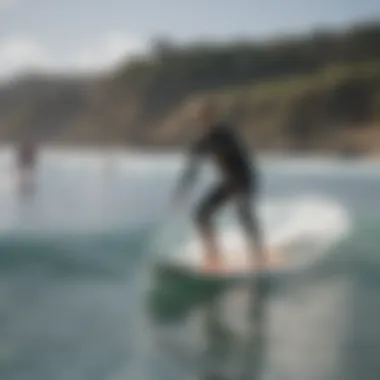
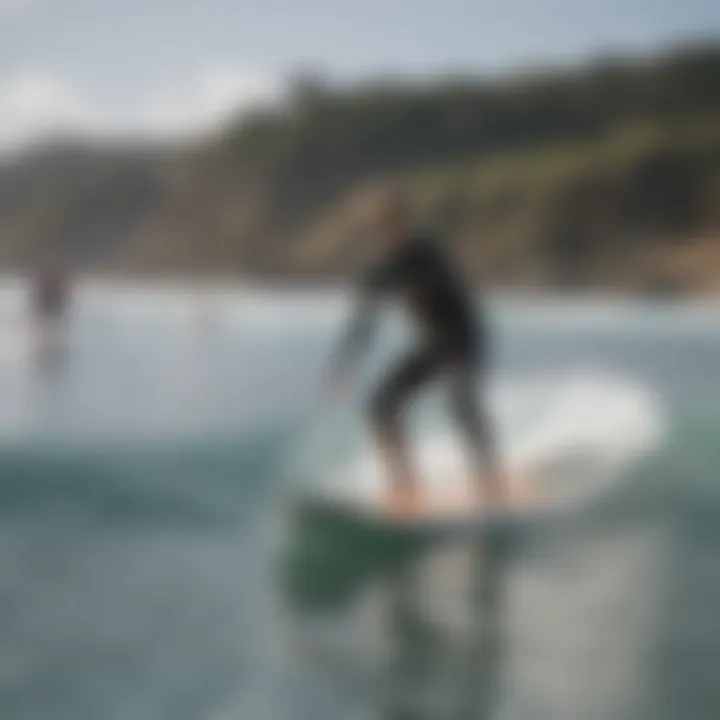
Group Lessons:
- Often more affordable and fun, making learning a social experience.
- Opportunity to bond with fellow surfers, which can foster a supportive community.
- Exposure to different skill levels, allowing for shared learning.
It's worth considering what environment you're most comfortable learning in. For some, the one-on-one experience is invaluable; for others, a group setting offers excitement and camaraderie.
"Choosing the right surf school is not just about learning to surf; it's the first step to becoming part of the vibrant surf culture that defines coastal life in Sydney."
Essential Surfing Gear and Accessories
Having the right surfing gear and accessories can make or break your experience on the waves. From keeping you warm to ensuring your safety, the right equipment is essential for both comfort and performance. It's not just about looking good; it’s more about being well-prepared to tackle the ocean’s whims. Adequate gear not only enhances your confidence but also plays a crucial role in learning how to surf efficiently.
Wetsuits: Choosing the Right Fit
When it comes to surfing, the sea can be unpredictable, with temperatures fluctuating widely, especially around Sydney's beaches. A wetsuit serves to insulate your body against chilly waters, effectively prolonging your time in the surf. Choosing the right wetsuit isn't as easy as it sounds. You need to consider factors such as thickness, fit, and material. A wetsuit that’s too tight will restrict your movement, while one that's overly loose will let cold water seep in, defeating its purpose.
A good wetsuit should:
- Fit snugly without being too restrictive.
- Be appropriate for the water temperature; a 3/2 mm suit is common for Sydney's water in spring and autumn.
- Allow for flexibility, especially around the shoulders and arms, which is vital for paddling.
When trying on wetsuits, consider wearing them for a few minutes – you should feel like it's a second skin. If discomfort immediately arises, keep looking. Remember, a quality wetsuit can significantly enhance your surfing experience.
Surfboard Types and Their Features
Surfboards come in various shapes and sizes, and understanding the differences can drastically improve your learning curve. Each type has unique characteristics that cater to different surfing styles and preferences.
Common surfboard types include:
- Shortboards: These are great for maneuverability and speed and are typically around 5’6" to 6’6" in length. However, they require more skill to ride, making them more suited for intermediates.
- Longboards: Ranging from 8 feet and above, these boards provide stability, making them perfect for beginners. They are easier to paddle and can catch waves more easily.
- Fish: Shorter and wider than traditional shortboards, fishes are ideal for those looking to ride smaller, mushier waves. They’re also a fun choice for experienced surfers wanting to try something different.
- Funboards: These are hybrids between shortboards and longboards, designed for versatility. They’re great for beginners looking to progress.
Understanding which type suits your skill level and riding style can help you make informed decisions when selecting your board, allowing you to enhance your surfing experience.
Leashes and Safety Equipment
A surf leash performs a critical role in your safety while surfing. It’s that cord that attaches your board to your ankle, preventing it from drifting away if you wipe out. Not only does it save you the hassle of retrieving your surfboard, but it also reduces the risk of injury to yourself and others around you, as a loose board can be dangerous.
Key points when considering leashes:
- Length: Your leash should generally be the same length as your surfboard. For example, if you’re using a 6’0" board, a 6’0" leash will suffice. For longer boards, a bit of extra length can help.
- Thickness and strength: Thicker leashes tend to be stronger. If you’re surfing bigger waves, consider getting a leash that is at least 7mm thick.
In addition to leashes, having the right safety equipment is vital. Prioritize acquiring swim fins, a rash guard to prevent irritation from your wetsuit, and a first-aid kit in case of minor injuries. It's also wise to keep an eye on local weather forecasts to prepare adequately for your surfing day.
"A well-equipped surfer is a happy surfer."
Ultimately, investing in quality surfing gear will ensure that your time in the water is productive and enjoyable. With the right accessories at your disposal, you can tackle the beautiful, yet often volatile, surf of Sydney with confidence.
Safety Practices While Surfing
Surfing is an exhilarating sport, but it’s not without its risks. Understanding and practicing safety measures while surfing is crucial not only for your health but also for the well-being of other surfers around you. Being aware of potential hazards and how to handle them can significantly enhance your experience in the water.
One of the primary elements of surfing safety is awareness. This means being conscious of your surroundings, including other surfers, the waves, and any potential hazards. Before even paddling out, take a moment to observe the conditions. Is there a strong current? Are other surfers getting caught in a rip? Such observations can save you from unwanted accidents.
Additionally, recognizing the importance of safety practices involves an understanding of the local surf culture and conditions. Different beaches have unique challenges and safety issues; for example, Sydney's Bondi Beach is known for its powerful waves and frequent rip currents. By understanding the location, you not only keep yourself safe but also respect the local surfers who know the waters well.
In summary, ensuring safety while surfing involves:
- Constant vigilance of your surroundings.
- Knowledge of local conditions and currents.
- Proper equipment usage such as leashes and wetsuits.
Understanding Rip Currents
Rip currents are one of the most dangerous aspects of surfing, especially for canoers and beginners. These swift channels of water flow away from the shore, posing a significant risk to inexperienced surfers who may not know how to navigate them. Understanding rip currents can be the difference between a thrilling surf session and a perilous one.
How to Identify Rip Currents:
- Look for choppy water: Rip currents often create a distinct line of disturbed water on the surface.
- Color changes: You might notice darker water in a rip current due to the sand being stirred up.
- Wave patterns: Watch for waves that break along the sides and not in the middle where a rip current exists.
When caught in a rip current, the first impulse might be to swim back to shore. However, this can lead to exhaustion. Instead, it's essential to remain calm and swim parallel to the shore until you are out of the rip, then head back to the beach.
Surf Etiquette: Respecting Others in the Water
Surfing is not just about riding waves; it’s about community, respect, and safety. Practicing good etiquette in the water is vital for creating a positive environment where surfers can enjoy their time without conflict. Here are some fundamental rules to follow:
- Priority: The surfer closest to the peak of the wave has the right of way. If you’re further down the line, give them space to ride.
- Don’t Drop In: This means not paddling onto someone else's wave. Dropping in can cause accidents and bad vibes.
- Communicate: If you intend to catch a wave, let others know. A simple shout can often prevent unfortunate collisions.
- Respect the Locals: Every beach has its regulars. Be polite and considerate, especially if you’re surfing in unfamiliar waters.
By adhering to these principles, you not only keep yourself safer but also contribute to a more harmonious surfing community.
Recognizing Weather Patterns and Conditions
Weather conditions play a significant role in surfing. Understanding how to interpret these changes can affect not just your safety but also the quality of your surf session. For instance, the wind direction can massively influence the type of waves you’ll encounter.
- Offshore Wind: This is generally favorable as it holds the waves up, creating better conditions for surfing.
- Onshore Wind: Conversely, this can create choppy waves, making it more challenging to ride.
- Tides: Be familiar with how tides affect your surfing spot. Some beaches may have better waves at low tide whereas others might be ideal during high tide.


In summary, observing the weather and understanding its influence on surf conditions is a vital practice for any surfer. Here, local surfer forums like reddit.com can be excellent resources for timely updates and shared experiences.
Remember: Being informed not only enhances your surfing experience but also ensures your safety as well as that of the surfers around you.
Local Surfing Competitions and Events
Participating in local surfing competitions and events is a significant part of the surfing culture in Sydney. It not only showcases talent but also builds a close-knit community among surfers. These events serve as a platform for beginners and seasoned surfers alike to test their skills, gain recognition, and immerse themselves in the vibrant surfing vibe that Sydney is renowned for.
Attending or participating in competitions offers a multitude of benefits, including:
- Skill Development: Surfers can learn from observing others and receive constructive feedback from experienced judges.
- Community Engagement: Local competitions foster camaraderie among surfers, often leading to mentorship opportunities and lasting friendships.
- Exposure: Events attract media coverage and sponsors, providing surfers with the chance to be recognized in the broader surfing community.
However, there are considerations to keep in mind. Competitors must be well-prepared and understand the specific rules and scoring systems used in competitions. Additionally, participating can require a fee, and athletes should be aware of their own skill level to ensure they are entering the appropriate category.
"Surfing isn't just a sport, it's a lifestyle. Competitions allow us to celebrate that lifestyle together, pushing each other while having fun." - Local Surfing Coach
Annual Surf Events in Sydney
Sydney hosts several annual surf events that cater to various skill levels. These events not only highlight the talent within the city but also draw surfers from all over Australia and beyond. Some of the notable events include:
- Sydney Surf Pro: This is part of the World Surf League qualifying series. It attracts elite surfers, showcasing the highest level of talent.
- Bombe Surf Gala: Focused more on fun and community than competition, this event allows surfers of all levels to participate and enjoy surf activities, entertainment, and local food.
- Bondi Surf Life Saving Club Competitions: These competitions emphasize safety and skill while promoting the vital work surf lifesavers do.
These events usually take place between late spring and summer, which is generally the height of the surfing season in Sydney with favorable weather and wave conditions. Engaging in any of these competitions not only enhances skills but is also a fantastic way to fully experience the surfing culture embedded in Sydney’s identity.
How to Participate as a Beginner
For beginners looking to enter the local surf scene, here are some steps to consider for participation in competitions:
- Gauge Your Skill Level: Before entering, it’s crucial to be honest about your abilities. Competitors are typically grouped by skill level, so don’t bite off more than you can chew.
- Join a Local Surf Club: Many clubs offer coaching, support, and a pathway into competitions. Clubs provide valuable resources and community ties that can help you grow.
- Register for Events: Ensure you check the registration details ahead of time. Each competition has its requirements, often available on websites or social media pages associated with the event.
- Practice Regularly: Consistent practice is key. It not only builds confidence but also prepares you for the competitive setting.
- Connect with Other Participants: Networking with fellow participants can offer insights and tips that can be beneficial for performance and enjoyment.
By participating, even as a beginner, you’re not just testing your skills against others, but you're also embracing the spirit of the sport and joining a community that shares the same passion for waves.
Community and Social Aspect of Surfing in Sydney
Surfing in Sydney is not just a sport; it is a vibrant community that embodies a lifestyle filled with passion, camaraderie, and shared experiences. For many, it is as much about the people you meet and the connections you build as it is about riding the waves. Being part of the surfing community can significantly enhance the experience, fostering friendships, motivation, and a deeper understanding of the art of surfing.
Joining Local Surf Clubs
Local surf clubs play a crucial role in integrating surfers into the broader surfing culture. Membership typically offers various benefits such as access to workshops, social events, and competitions. These clubs provide an excellent platform for beginners to meet experienced surfers who can offer guidance and tips.
Some notable surf clubs in Sydney include:
- Bondi Surf Bathers Lifesaving Club: Founded in 1907, this club prides itself on its heritage while promoting safety and surfing skills.
- Manly Lifesaving Club: Known for its strong community focus and variety of programs for all ages.
Being part of a surf club means having a ready-made social network. Members often feel more confident hitting the waves together, sharing equipment, and even organizing group trips. Additionally, these clubs often host social gatherings, creating a sense of belonging and team spirit that enhances the surfing journey. Clubs are also venues for knowledge sharing, where seasoned surfers can pass on their wisdom to those keen on learning.
Online Forums and Resources for Surf Enthusiasts
In today's digital age, online forums are invaluable platforms for surfers of all levels to connect and share. Websites like Reddit have vibrant communities dedicated to surfing discussions. Here, surfers can post questions, seek advice, or simply share their latest surf sessions, fostering a sense of community beyond the water.
Other helpful resources include:
- Facebook Groups: These can be excellent for real-time advice and organizing meet-ups. Search for groups like "Sydney Surfers" to find locals who are keen to hit the waves.
- Surfing Wikis: Platforms such as Wikipedia provide a broad view of surfing culture and history, equipping enthusiasts with background knowledge that enhances their appreciation of the sport.
In addition to forums and groups, many surf schools or clubs maintain active Instagram accounts or websites where they share tips and organize events. Engaging with these platforms helps build connections within the surfing community while staying updated on the latest trends in the surfing world.
"The magic of surfing is not just in the waves but in the people you surf with. Building these connections makes every session memorable.”
Considering the community aspect of surfing is vital for anyone keen on taking up the sport. The relationships formed, whether through clubs or online platforms, lay the foundation for learning, growth, and enjoyment in surfing. Engage as much as you can; you will find that it's not just about conquering the seas, but about celebrating moments with fellow enthusiasts.
End: Embracing the Surfing Lifestyle
Surfing is more than just a hobby; it's a way of life that fosters personal growth and community. As you've navigated through this guide, you’ve likely noticed the emphasis on understanding not just the mechanics but also the very essence of surfing. It’s about rhythm, respect, and resilience. Engaging with the waves deepens one’s connection with nature and oneself, leaving an imprint that extends beyond the beach.
In embracing the surfing lifestyle, surfers discover various benefits that manifest in multiple ways. Whether it’s the thrill of catching your first wave or the quiet serenity while waiting for the next set, each experience adds layers to your character. Your journey may involve numerous wipeouts, but each fall serves as a stepping stone for personal development.
Diving into this lifestyle wards off the routine mundanity. Every session brings new challenges and skills to hone. It is important to remember that improvement takes time. Committing to surf regularly not only sharpens abilities but also instills patience—an invaluable trait both in and out of the water.
"Once you learn to surf, the ocean becomes a part of you, a friend that always welcomes you back."
Long-Term Commitment to Improvement
A long-term commitment in surfing translates into continuous evolution. Improvement happens over time; it’s not about the fastest trajectory. Instead, it involves recognizing small wins, understanding that persistence is key to mastering the board. One approach is to establish a consistent routine. Dedicate certain days per week for practice. This not only helps in skill enhancement but builds discipline.
Consider setting specific goals: maybe it’s mastering a particular maneuver like the cutback or simply improving paddling technique. Regular reflections on your progress can illuminate areas needing focus. In this manner, celebrate the journey instead of only the destination.
Connect with surf instructors or experienced surfers. Their reminders and viewpoints can sharpen your focus. Also, leveraging technology can lead to significant improvements. Recording your sessions allows you to analyze your posture and technique. It’s a powerful tool for refining your skills.
Building Connections with Fellow Surfers
A significant aspect of surfing is the community it fosters. Building connections with fellow surfers can enhance the overall experience. Whether it's sharing tips on technique or discussing the local surf forecasts, relationships with others who share your passion can enrich your surfing journey.
Joining local surf clubs or forums can be a great way to expand your network. These platforms often present opportunities for mentorship and friendship. Besides, social media groups can help you find fellow enthusiasts or even local meet-ups. Connect with people on Reddit or Facebook who share similar interests, and you might even find a surfing buddy for those early mornings at the beach.
Furthermore, being involved in community activities can strengthen bonds. Participating in local competitions, beach clean-ups, or surf-related events can create lasting friendships. These connections not only provide a support system while improving skills but also contribute to a sense of belonging.
In summary, embracing the surfing lifestyle means recognizing that improvement and community development are intertwined. Your passion can invite camaraderie, support, and endless opportunities for growth. It's not merely about catching waves; it’s about enjoying the ride.















